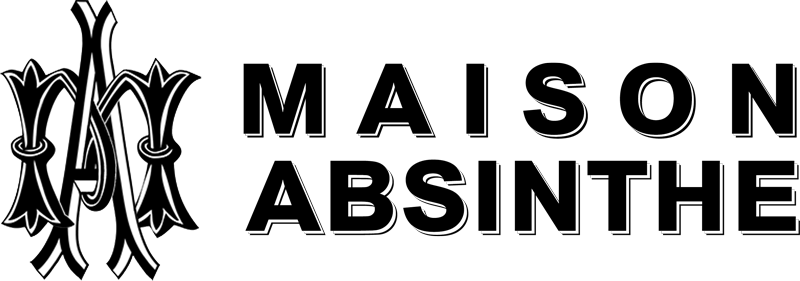What is Absinthe?
Absinthe is a high alcohol drink that was hugely popular during the 19th and early 20th centuries in Europe and now after 95 years of being banned, is now legal again. True absinthes are carefully distilled from a variety of all natural herbs. Some of these herbs are regional and can include: sweet flag, angelica, dittany, marjoram, peppermint, tansy, melissa, sage, coriander, veronica, angelica, andhyssop, but will always include: green anise, fennel and the most important being, grande wormwood or Artemisia absinthium. These 3 ingredients are known as "the holy trinity." Without grande wormwood, the liquor is not an absinthe. Many absinthes are now made using the same recipes that were used over a century ago. Absinthes generally contain between 45% and 72% alcohol (90 and 144 proof).
Is Real Absinthe Legal for Purchase in the United States?
Yes. Real absinthe is now for sale within the U.S. Standards currently in place by the European Union were adopted by the U.S. in May of 2007. This law instituted by the TTB (Alcohol and Tobacco Tax and Trade Bureau) states that as long as the thujone level is less than 10 parts per million, per liter, then a product can be considered "thujone-free." This is how absinthe can now be sold in the U.S. Many absinthes today are made from the same original recipes from pre-ban absinthes, whose thujone levels were sometimes below this new standard. During a recent study of 13 pre-ban absinthes, there was a variance of between 0.5 and 48.3 parts per million, per liter. During the pre-ban era (before 1915) the word thujone was rarely used and if it was, it was used by scientists, not by absinthe drinkers. The word thujone was never printed on an absinthe bottle or found in advertisements. People did not care how much thujone was in the absinthe, they only cared about its taste. The only time the word thujone began to be used was during the anti-absinthe days. This one ingredient became the entire scapegoat for absinthe propaganda. The thujone circus today is being orchestrated mostly by Eastern European absinthe makers and fly by night companies in the U.S. trying to capitalize and prey on the innocent and naive. These companies try to convince the uninformed that "the more thujone the better." The myths associated with absinthe and thujone like this are unfortunately, swaying people in the wrong direction. You can buy real absinthe right here on this site.
What does Absinthe taste like?
The core of absinthe lies with anise, fennel and grande wormwood. These 3 herbs combine to give what is usually explained as an herbal and anise taste and smell, and NOT that of black licorice, as many inaccurately describe. Originally used as a digestive to settle one's stomach, absinthe is a refreshing drink, especially when prepared correctly.
Where can I buy Absinthe?
You can purchase absinthe in most major liquor stores throughout the United States and Europe. There are a number of very reputable web stores that are located in the U.S. and Europe that have access to most legal absinthes. Many of these online stores ship to most states and countries (where permissible) and many guaranty the delivery of your package. You can also purchase absinthe online right here at Maison Absinthe for a wider selection.
Why are some Absinthes green and others clear?
After the distillation process, all absinthes are clear until they are soaked in natural herbes to color them. This is the last process making absinthe and some distilleries prefer not to add this step. Usually, petit wormwood, hyssop and sometimes melissa are used to color most French absinthes and Swiss absinthes. After the banning in Switzerland in 1910, a number of Swiss distillers went underground and continued to make absinthes. These absinthes were bottled without this last process and thus were clear so not to be recognized by authorities. These were referred to as Clandestines (secretive) or La Bleus. Today these names are synonymous with colorless absinthes. The current Swiss law prohibits any absinthe made within the country to contain any ingredient that is not natural.
How much alcohol is contained in Absinthe?
Absinthe is a high alcohol content liquor. Typical absinthes range between 45 to 72 percent alcohol (90 to 144 proof). There are some absinthes from the Czech Republic that are as high as 180 proof.
What is Wormwood?
There are two different types of wormwoods used in making a distilled absinthe. The first and most important is grande wormwood, or Artemisia absinthium. This could be the single the most controversial and misunderstood herb in the liquor industry. Without grande wormwood, the liquor in not an absinthe. Grande wormwood is a plant that grows wild in various parts of the world and in particular, the hills of western Switzerland and eastern France. Grande wormwood should never be misconstrued with its cousin petite wormwood (Artemisia pontica, a.k.a. Roman wormwood), which does not contain thujone and is primarily used to give absinthe its color.
Why do some people light their Absinthe on fire?
This was invented sometime in the 1990's in the Czech Republic as nothing more than a gimmick. Pre-ban absinthe drinkers would have never lit their absinthe on fire. It is has become more socially acceptable due to popular movies, such as "From Hell" and "Moulin Rouge." Both instances of absinthe used in these movies are historically inaccurate. Today, many bars choose to "flame" their absinthe because it sparks interest and brings attention to the drink. Why would you take a handmade and carefully distilled liquor and burn it?

